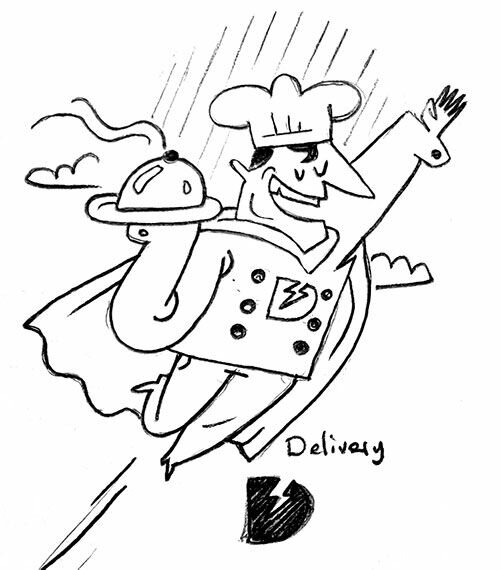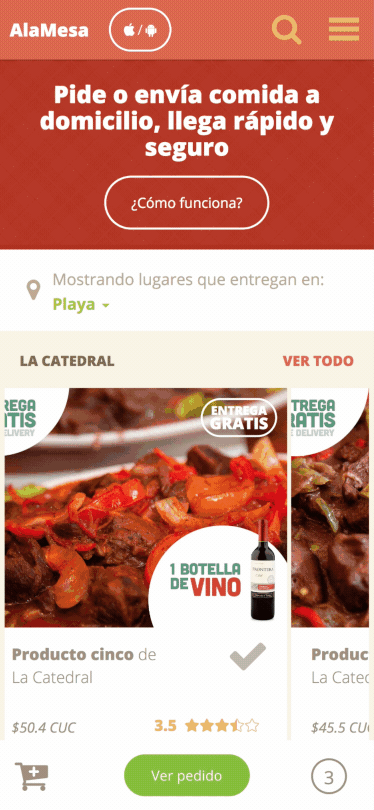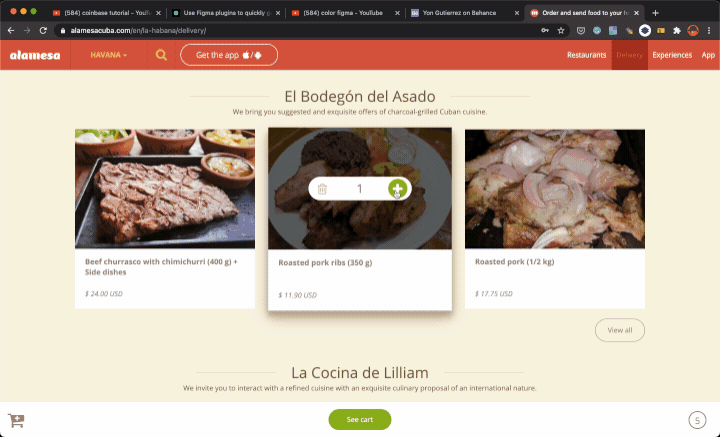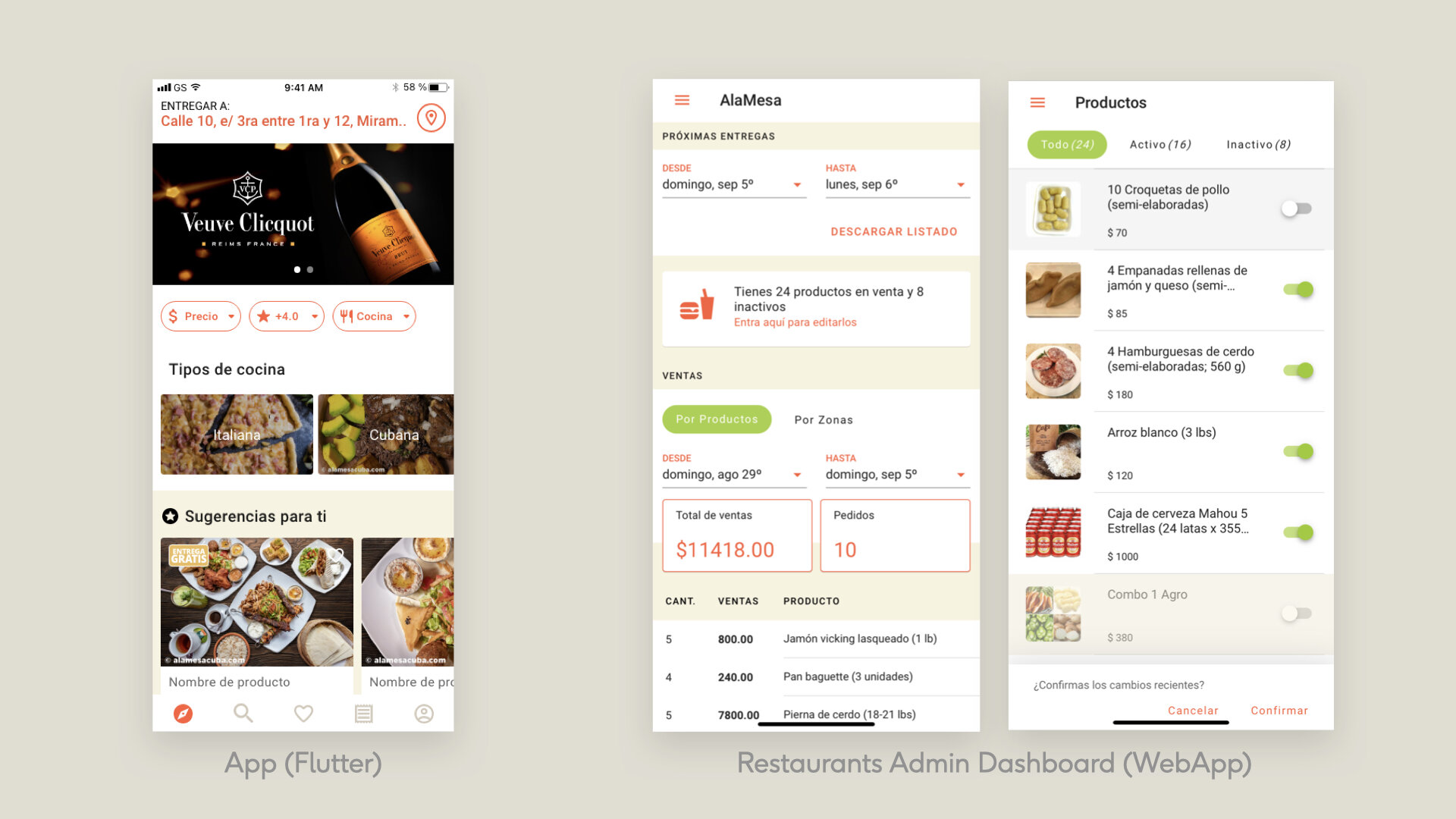
AlaMesa Delivery Service

AlaMesa Delivery Service
As co-founder and Product Designer I’ve been designing AlaMesa's Products since May 2011. I designed and oversaw 3 core products (Reserve, Experiences, and Delivery). This case study is about the last one: the Delivery service.
Responsibilities: Research, Wireframe, Prototype, Information architecture design, Visual and interaction experience design (UI/UX), Testing, and go-to-market strategy.
Team (4 people): I worked with the CTO (co-founder & backend developer), a frontend developer, and an iOS & Android developer.
Year • Location: 2017 • Havana, Cuba.
THE OPPORTUNITY
Build the first food delivery service for Cuba

Early illustrations concepts by Pablo Montes de Oca.
THE HYPOTHESIS
We believe that building a delivery service for Cubans living abroad to support their relatives on the island could become AlaMesa's principal source of income.
We will know that we have succeeded when we see that 50% of our gross income comes from this service.
THE GOAL
Test the hypothesis & build an MVP
OUR PLAN
We decided that the best way to test it was to sell a limited number of cakes for Mother's Day 2017. We had 3 months to build it.
IF that works well, we will repeat the test for Father's Day, adding meals.
THEN we will work on a better marketplace for year-end sales.
ELSE, we will dig deeper to find other opportunities.

Research
In addition to studying the market and making projections based on statistics, I use interviews to validate our assumptions. I interviewed 3 restaurants owners and *25 Cubans friends living abroad.
We validate that
Cubans living abroad want to support or spoil their relatives with meals and groceries.
Restaurants want to reach those new customers and can respond to the demand.
* I convert these 25 interviews into a waitlist to reach out when the product came online.
Main constraints
Restaurants don’t have internet access / (Solution) Our team will process the orders by calling the restaurants.
The users who receive the orders do not have internet / (Solution) Our team will contact them by phone to coordinate the delivery.
We have blocked access to payment gateways (Stripe, Paypal, etc) / (Solution) We’ll look for alternatives in Europe while we continue trying with Stripe.
We do not have transportation vehicles to make the deliveries / (Solution) We’ll rent the necessary vehicles for this first test.
We are prohibited by law from directly hiring delivery drivers / (Solution) We’ll work with delivery drivers from restaurants.

pre- MVP to test out the hypothesis.
Testing the hypothesis

Illustrations by Pablo Montes de Oca
Results of Cakes deliveries for mother’s day
We planed to sell 48 cakes and end up selling 99 cakes.
80% of the waitlist bought and told their friends to buy.
We (the founders) delivered the items and learn about the process.
We actually made profits ($400).
Testing the hypothesis again for father’s day

Flow: See Cart -> Place Order

Flow: Adding products -> See Cart



Flow: Rating the service
Results: This second test worked very well so we decided to work on a better marketplace for year-end sales.
Design principles
Mobile-first approach
Our analytics data indicates that most of the target users use the cell phone to make their purchases.
Data driven
Our decision-making process will heavily rely on collected data about customers' behaviors.
Content-first approach
The content for this project will determine the designs of each screen and flow. We are going to ask for personal info only when needed.
Trustworthy
We’ll earn user’s trust by being consistent, transparent, and reliable.
Design exploration

Mobile / Tablet / Desktop designs of the Homepage

Working on the Frontend

Working on the Frontend (Zeplin)
Eventually I designed a Delivery App for clients and a Dashboard for the restaurants.

Conclusions
In three years this product became our main source of income, reaching 90% of our total income in 2020.
Key to success
Understand how each aspect of the delivery works by making the firsts deliveries ourselves.
Empathize with restaurants and target users and incorporate their feedback on the iterations.
Focus on getting die-hard users instead of advertising the product.
